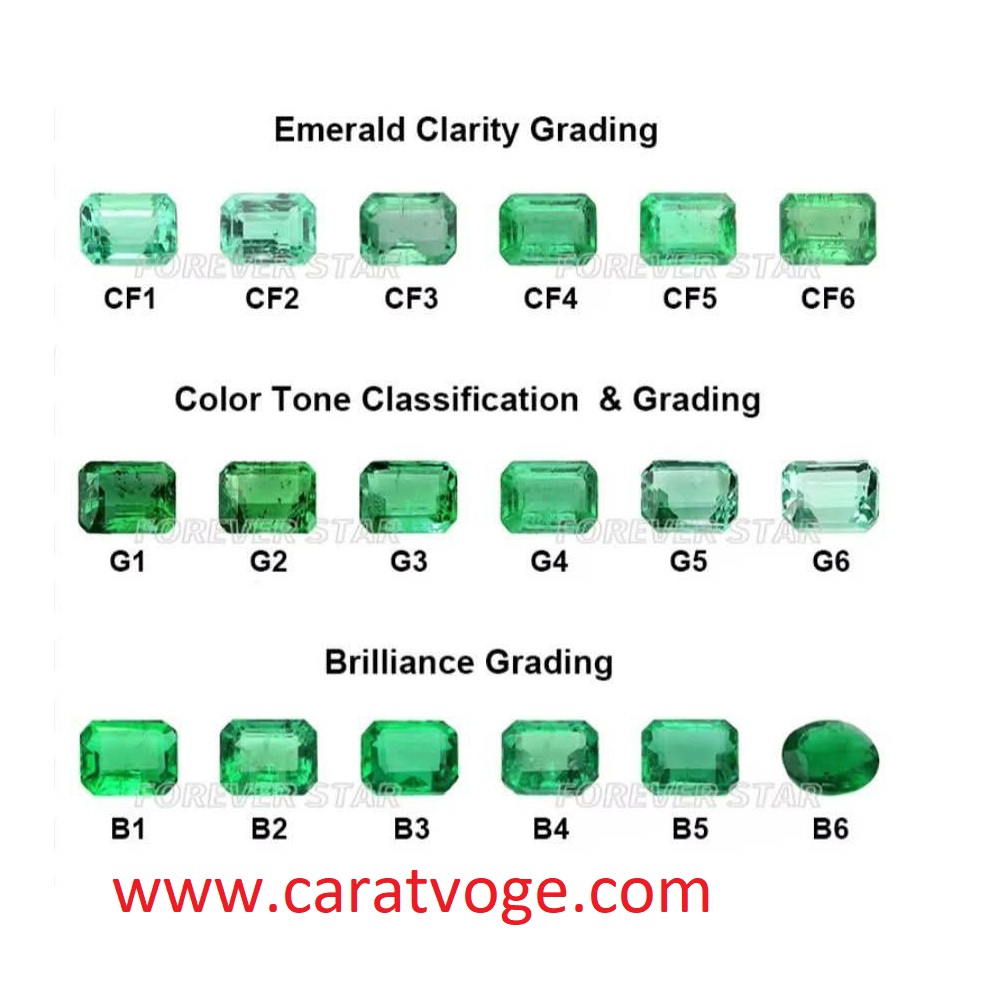Emerald Grading Chart – Clarity, Color & Brilliance Explained
When buying or evaluating emeralds, it’s essential to understand how they are graded. Gem experts use three main criteria to assess emerald quality: Clarity, Color, and Brilliance. Here’s a complete breakdown of what each means and how emeralds are ranked.
📊 Emerald Clarity Grading
Clarity refers to the visibility of internal or surface inclusions (cracks, feathers, or bubbles). Emeralds are examined under magnification with a light source and fiber optics to determine clarity grade:
- CF1: Very high clarity, almost no inclusions.
- CF2–CF3: Minor inclusions, not visible to the naked eye.
- CF4–CF5: Moderate inclusions, slightly visible.
- CF6: Noticeable surface cracks and filling materials.
🎨 Emerald Color Tone Classification
Color is one of the most important aspects of emerald value. Grading is based on tone and hue — from deep green to pale green shades:
- G1: Deep forest green (most valuable).
- G2–G3: Vivid green with slight internal features.
- G4: Medium green tone.
- G5–G6: Light green or bluish-green tones.
✨ Emerald Brilliance Grading
Brilliance refers to how much light an emerald reflects — its sparkle. The gem is placed 25cm from a light source and shaken at a 30° angle. The brighter the crown area, the higher the brilliance grade:
- B1: Highest brilliance and sparkle.
- B2–B3: Strong fire and light return.
- B4–B5: Moderate brilliance.
- B6: Low brilliance or dull appearance.
🧠 Quick Summary
To choose the best emerald, look for a gem with:
- High clarity (CF1–CF3)
- Rich green color (G1–G3)
- Strong brilliance (B1–B2)
These qualities not only ensure the stone’s beauty but also increase its investment value.
🖼 Emerald Grading Chart
Here’s a visual reference for emerald clarity, color, and brilliance levels:

💎 Final Tip:
Always buy certified emeralds from trusted sources to ensure authenticity and accurate grading.
Leave a Reply